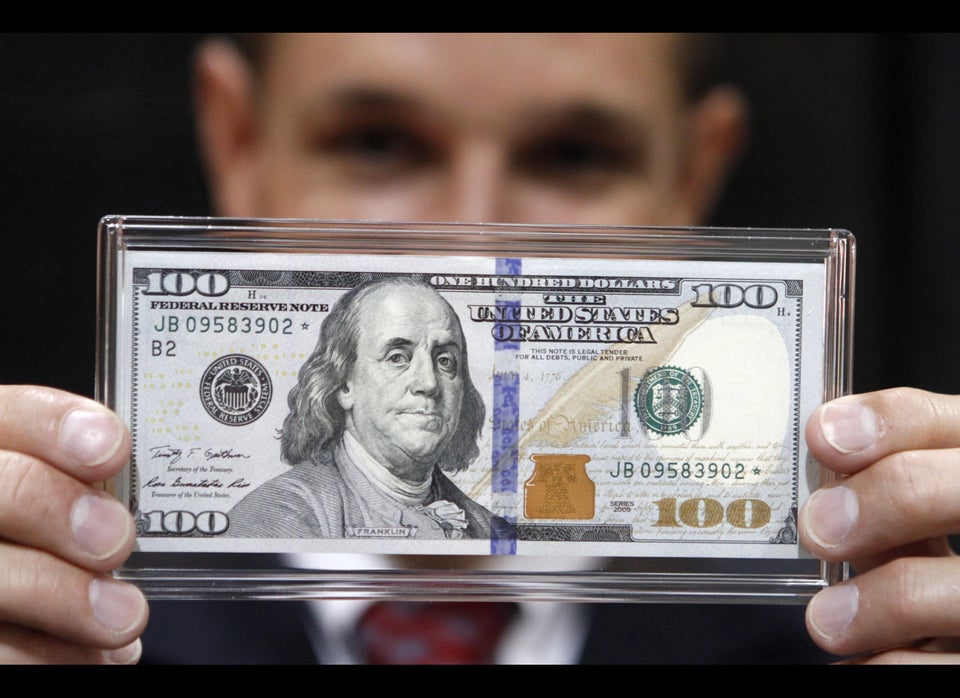
WASHINGTON -- The Federal Reserve said Wednesday that it will maintain the pace of its bond-buying program to keep long-term interest rates at record lows. But it offered a more optimistic outlook for the U.S. economy and job market.
The brighter view of the economy could be a hint that the Fed is moving closer to reducing its bond purchases. But the statement issued after its two-day policy meeting gave no indication of when that might happen.
Investors reacted initially by selling both stocks and bonds. The Dow Jones industrial average was down 70 points shortly after the statement came out; minutes earlier, it had been down just 16. The yield on the 10-year Treasury note shot up to 2.27 percent from 2.21 percent just before the statement came out.
Follow @HuffPostBiz to get live updates on the Fed decision from The Huffington Post's Mark Gongloff.
In the statement, the Fed says the economy is growing moderately. And for the first time it said the "downside risks to the outlook" had diminished since fall.
Timothy Duy, a University of Oregon economist who tracks the Fed, calls the statement "an open door for scaling back asset purchases as early as September."
The fact that the Fed foresees less downside risk to the job market "gives them a reason to pull back" on its bond purchases, Duy says.
The Fed says it will keep buying $85 billion a month in bonds until the outlook for the job market improves substantially. The goal is to lower long-term interest rates to encourage borrowing, spending and investing. It hasn't defined substantially.
The central bank also said that it would maintain its plan to keep short-term rates at record lows at least until unemployment reaches 6.5 percent.
The Fed also said that inflation was running below its 2 percent long-run objective, but noted that temporary factors were partly the reason.
The Fed also released its latest economic projections on Wednesday, which predicted that unemployment will fall a little faster this year, to 7.2 percent or 7.3 percent at the end of 2013 from 7.6 percent now. It thinks the rate will be between 6.5 percent and 6.8 percent by the end of 2014, better than its previous projection of 6.7 percent to 7 percent.
"The more upbeat tone and the change in the unemployment forecast will only encourage expectations for action soon," Jim O'Sullivan, chief U.S. economist at High Frequency Economics, wrote in a research note. "We continue to believe that tapering could start at the Sept. 17-18 meeting."
The Fed said inflation could run as low as 0.8 percent this year. But the Fed predicts it will pick up next year to between 1.4 percent and 2 percent.
The statement was approved on a 10-2 vote. James Bullard, the president of the Federal Reserve Bank of St. Louis, objected for the first time this year, saying he wanted a stronger commitment from the Fed to keep inflation from falling too low.
Esther George objected for the fourth time this year, again voicing concerns about inflation rising too quickly.
The ultra-low rates engineered by the Fed have helped fuel a housing comeback, support economic growth, drive stocks to record highs and restore the wealth America lost to the recession.
Financial markets have been gyrating in the four weeks since Chairman Ben Bernanke told Congress the Fed might scale back its effort to keep long-term rates at record lows within "the next few meetings"_ earlier than many had assumed.
Bernanke cautioned that the Fed would slow its support only if it felt confident the job market would show sustained improvement. And he also told lawmakers that the Fed must take care not to prematurely reduce its stimulus for the still-subpar economy.
The Fed announced after its September meeting that it would purchase $40 billion a month in mortgage bonds for as long as it deems necessary. And in December, the Fed expanded the program to $85 billion a month, adding $45 billion a month in Treasury bond purchases. The Treasury purchases replaced an expiring bond-purchase program.
Job growth picked up after the Fed announced the latest round of bond purchases. Since October, the economy has added an average of 196,500 jobs a month, up from 157,000 a month in the previous eight months.
Last month, the U.S. economy added a solid 175,000 jobs. But the unemployment rate is still high at 7.6 percent. Economists tend to regard the job market as healthy when unemployment is between 5 percent and 6 percent.
